A Week in the Bush Vol. 530
on Jan 08, 2025The bush is looking amazing after the summer rains have started to fall, and plenty of wildlife and newborns around.
Baby impalas face threats from a variety of predators, including Martial Eagles, snakes, and lions, which prey on them due to their small size and vulnerability. To enhance their chances of survival, these young antelopes often stay in groups alongside their mothers and other impalas. This strategy allows them to benefit from the collective vigilance of the group, increasing their chances of detecting and escaping from potential threats. Additionally, the presence of multiple individuals can confuse predators, making it harder for them to single out a target.
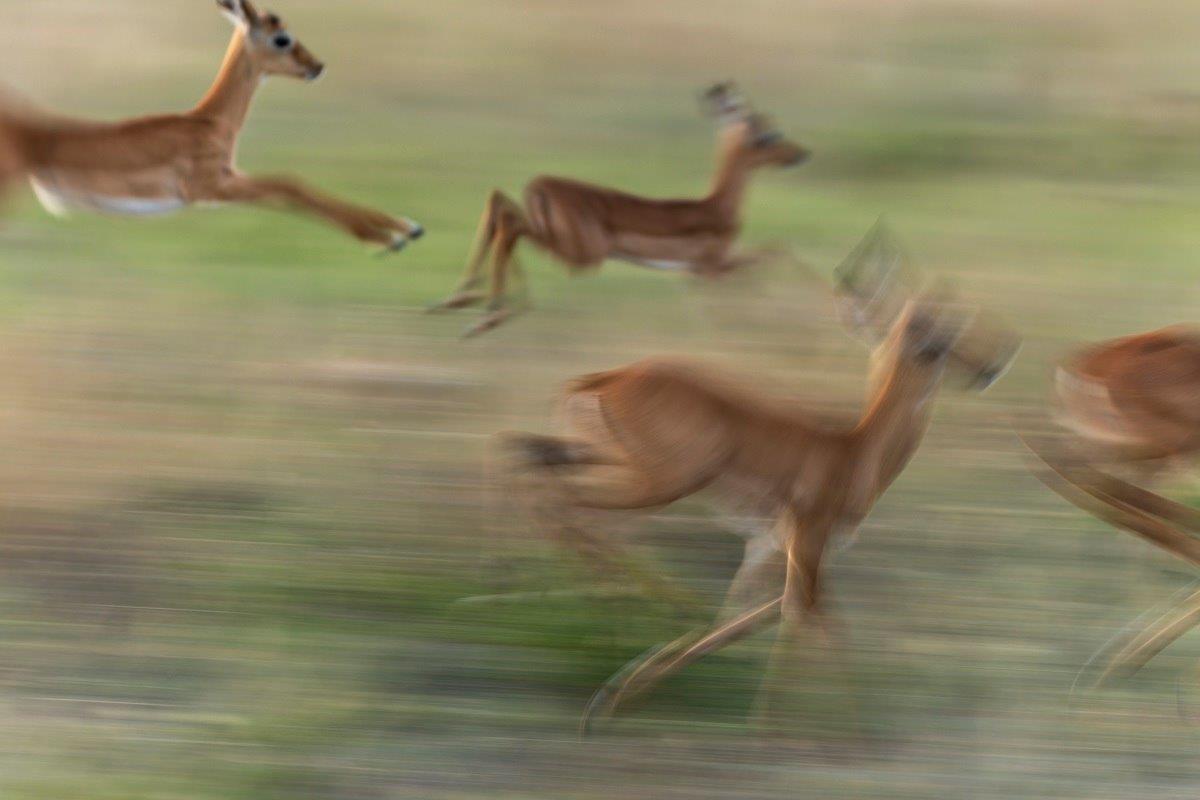
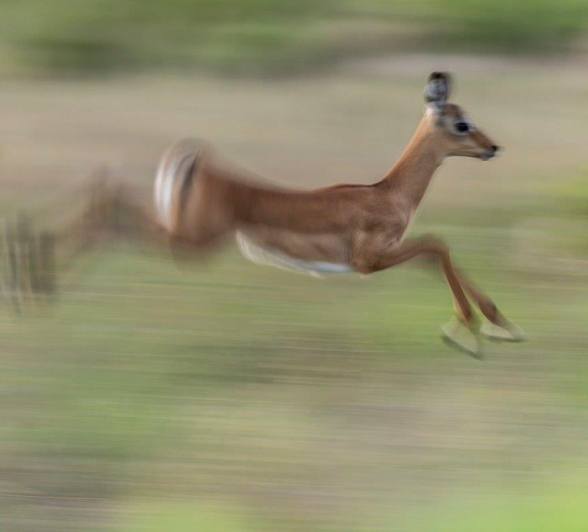
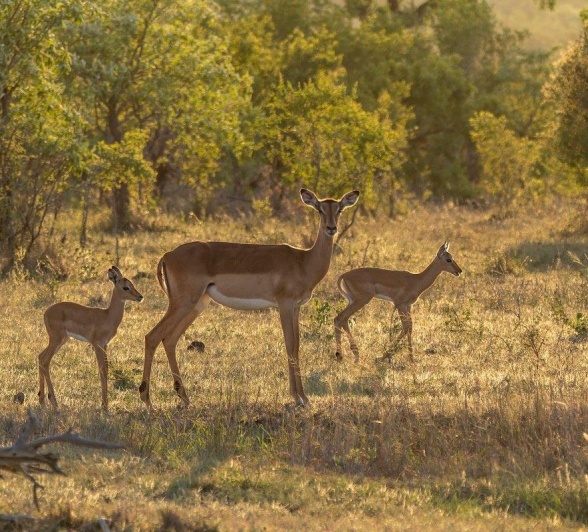
As we drove down a narrow road flanked by dense bush, the head of a kudu suddenly appeared above the foliage, catching our attention. These elusive animals often seek refuge in thick vegetation, where their camouflage allows them to remain well-hidden.
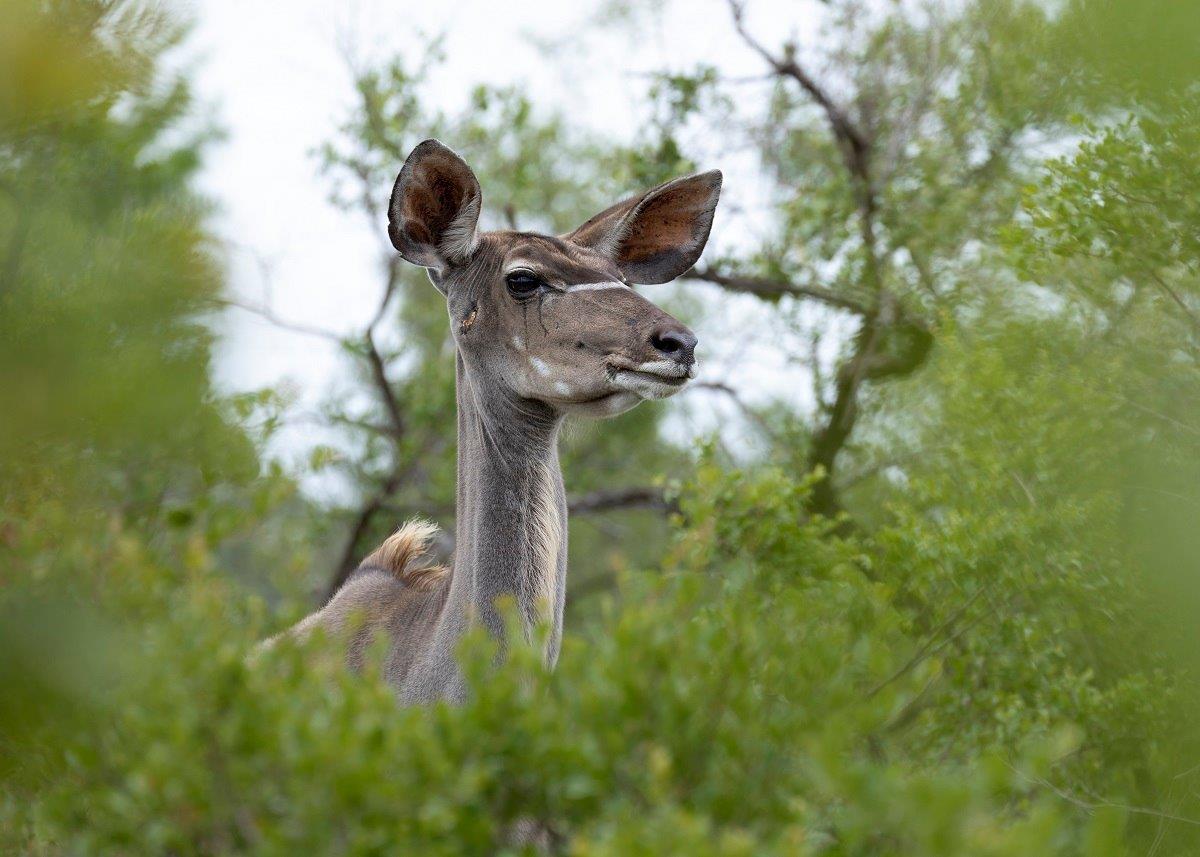
Unlike traditional weavers that use grass, Red-billed Buffalo Weavers construct their massive nests using sticks. In this instance, one clever weaver had just swiped a stick deemed perfect for its nest from a neighbouring one!
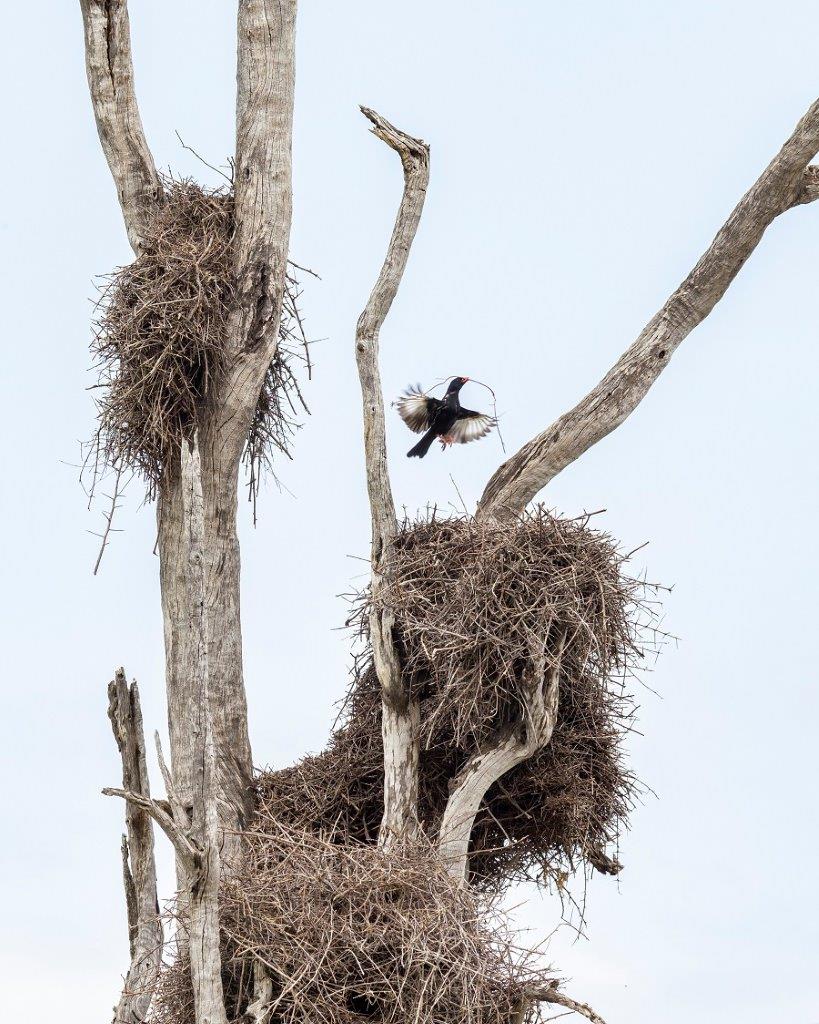
On our way back to the lodge, we came across a Spotted Eagle-owl meticulously surveying its surroundings. Perched near an open clearing, it was perfectly positioned to spot any potential prey venturing across the exposed area. Owls have extraordinary long-distance eyesight, acting as a pair of binoculars. However, their eyes are fixed in their sockets, meaning they can't move them, instead, they rely on their remarkable ability to rotate their entire head, providing precise and detailed vision that makes them exceptional hunters.
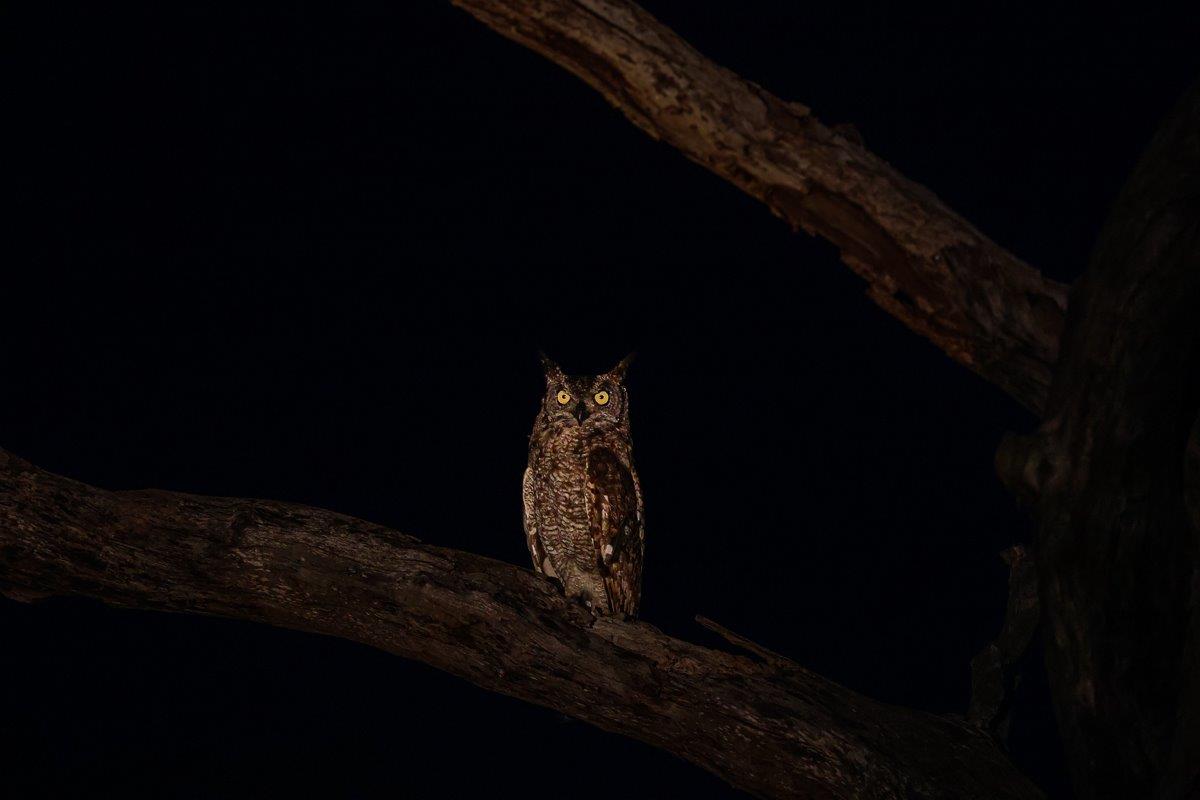
On the 3rd of January, stargazers around the world were treated to a breathtaking celestial display: the waxing crescent moon shining brightly alongside Venus, clearly visible to the naked eye.

While driving through the southern section of our reserve, lush with grass and vibrant vegetation, tracker Donald’s voice carried a note of excitement as he calmly announced, "Serval". To our surprise, we spotted this elusive cat in the late afternoon. Although servals are primarily nocturnal and typically active after nightfall, this one was already on the move. The recent rainy weather likely disrupted its hunting patterns, compelling it to extend its activity into daylight hours. Servals are known to favour areas with tall grass, where they stalk ground-dwelling birds, snakes, and occasionally even insects during particularly challenging times. Witnessing this elegant predator in daylight was a truly unexpected and fascinating encounter.
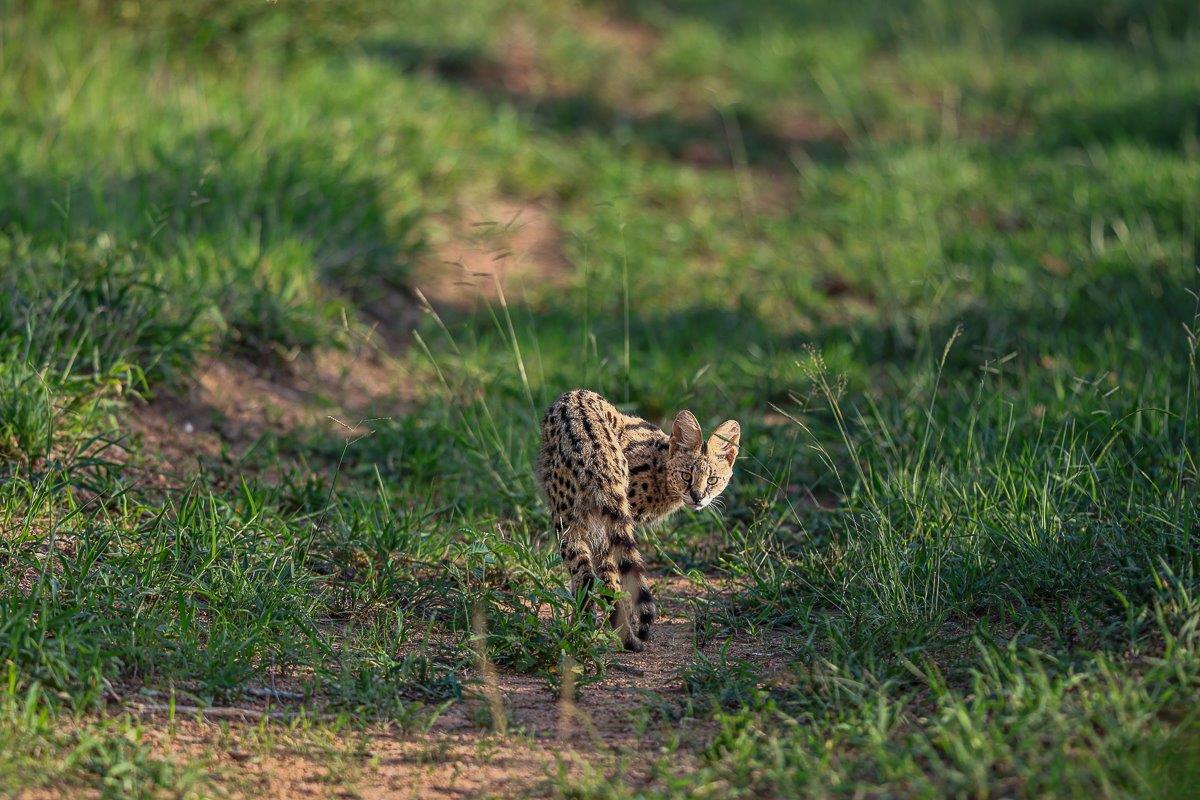
We were fortunate to encounter the impressive N’weti male in the company of the elegant Ntsumi female. Both leopards appeared to be in excellent condition, likely having recently finished a substantial meal. As we followed them through the dense thickets, it quickly became evident that Ntsumi was eager to mate. She displayed her intentions by rubbing against him and lying down invitingly, but N’weti initially seemed disinterested, casually avoiding her advances. However, persistence paid off and shortly afterwards, he relented, and the pair began mating, providing us with an unforgettable sighting. These two leopards will likely spend the next few days together, and we can only hope that Ntsumi successfully conceives.
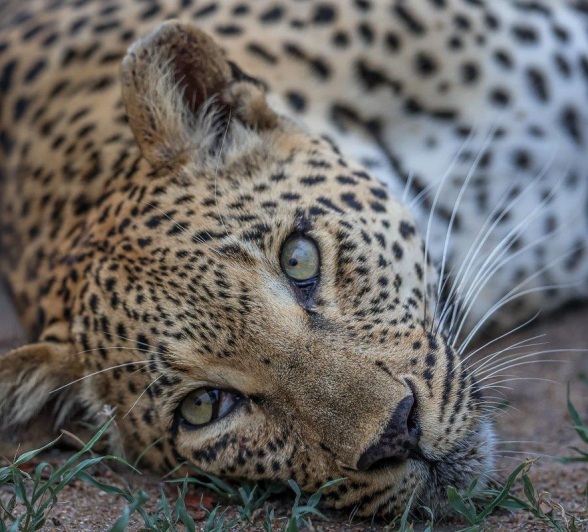
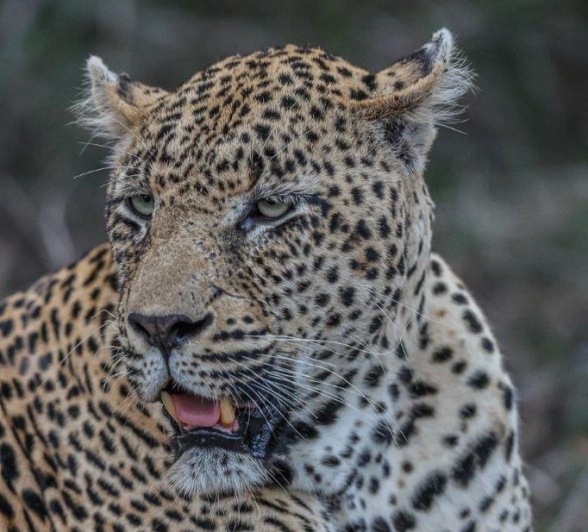
We decided to follow up on a female leopard sighting but when we arrived in the area, there was no immediate sign of her. Knowing her general direction of movement, we expanded our search perimeter. Before long, we discovered the Tengile female and her daughter making their way into the thickets.
The pair soon settled down, with the daughter calling softly to her mother. They rested together, grooming one another and displaying the affection they still share. However, this bond will soon begin to shift. As the young female starts to explore more independently, we expect to see them gradually separate over the coming months. This transition is also why Tengile has been expanding her territory. By enlarging her range, she’s creating space to offer her daughter a portion of it as a starting point for establishing her own territory in the future.


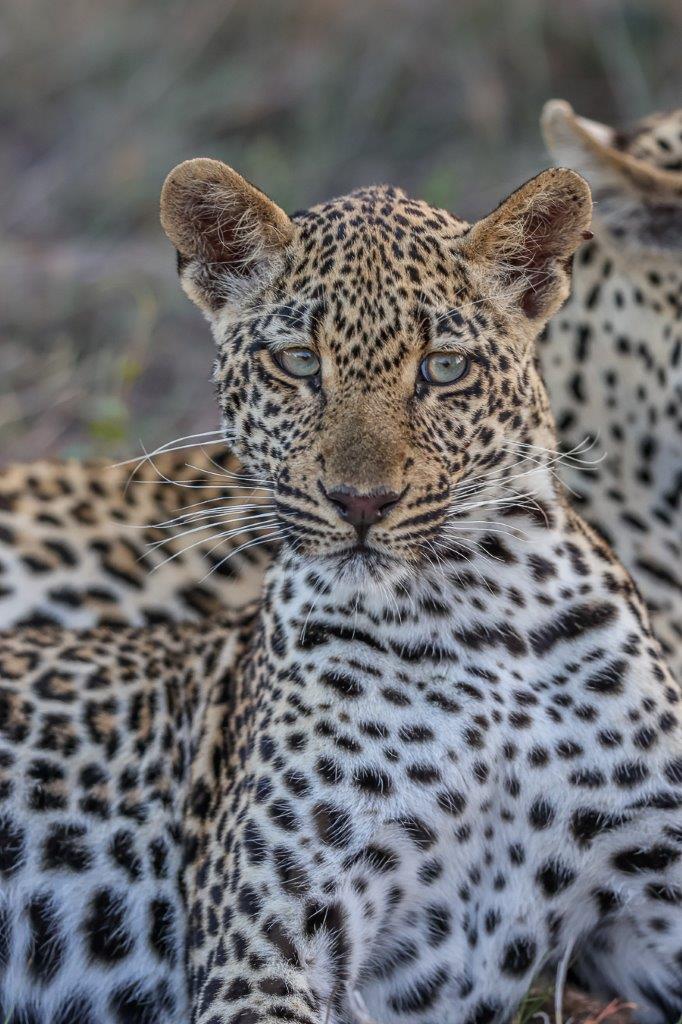
While driving along a dense drainage line, we caught a brief glimpse of Tengile’s daughter as she was slowly moving out of the thicket into the open. We waited patiently, watching as she made her way to a nearby Marula tree, climbing effortlessly to find a safe and comfortable spot to rest and escape the rising heat. Leopards often choose to sleep in trees, as these elevated perches provide safety from other predators and the benefit of a cooler breeze above ground level.
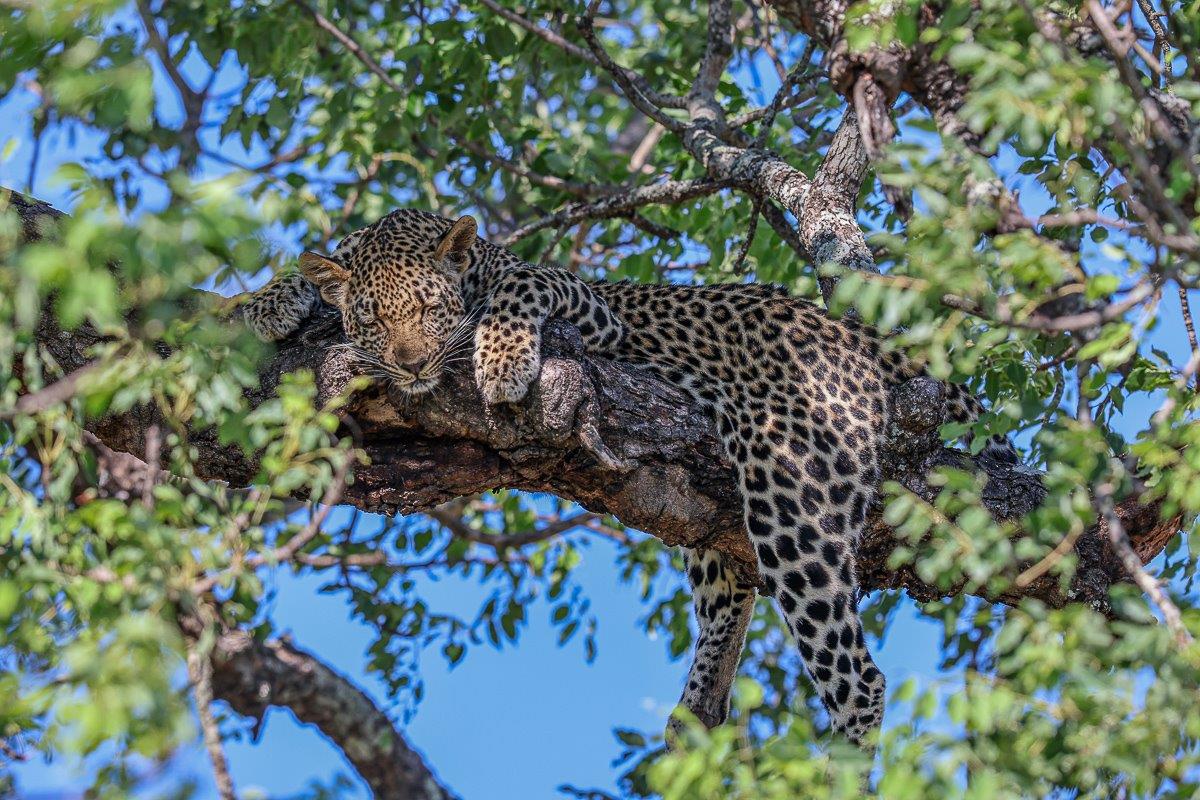
On a hot morning, we set out to track a male leopard, carefully following his footprints. Despite our efforts, we couldn’t locate him and decided to continue with our safari, all the while keeping an eye on the area where his tracks had disappeared. Nearby, we came across some rhinos grazing through a thicket and decided to follow them.
As the rhinos passed a large hole near an abandoned termite mound, a group of startled warthogs suddenly bolted. Unbeknownst to us, the male leopard we had been tracking was lying in wait for this exact moment. With lightning speed, he sprang into action, launching a chase that ended with him successfully catching two young warthogs.
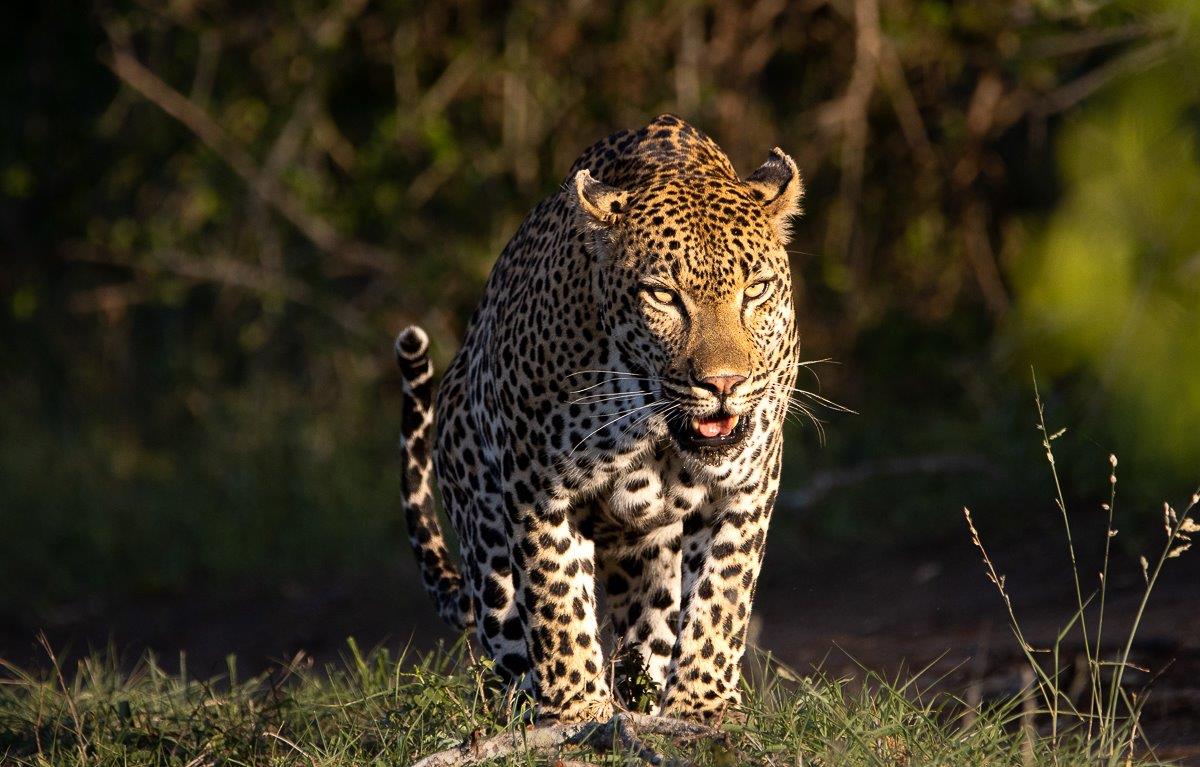
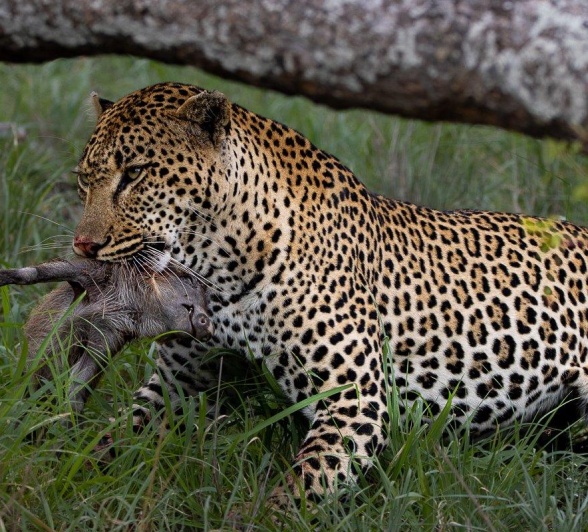
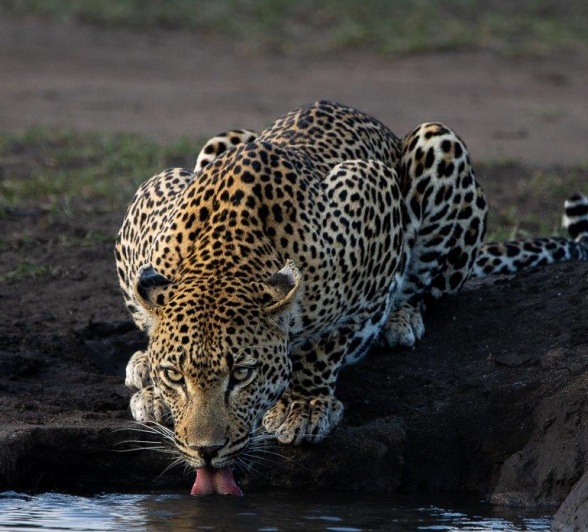
While driving through the southern section of our reserve, we were pleasantly surprised to spot this young male leopard once again. He was busy stalking a herd of impalas, which were slowly making their way into the tree line as the sun was setting behind them. However, his eagerness got the better of him, and the impalas spotted him, abruptly ending his hunt.
This young male has been lingering in the area for the past few weeks. With no dominant male leopard currently occupying this part of the reserve, it provides him with the perfect opportunity to remain under the radar, gain experience, and learn the lay of the land. Only time will tell, but we hope he can establish this area as his own territory and settle here in the future.
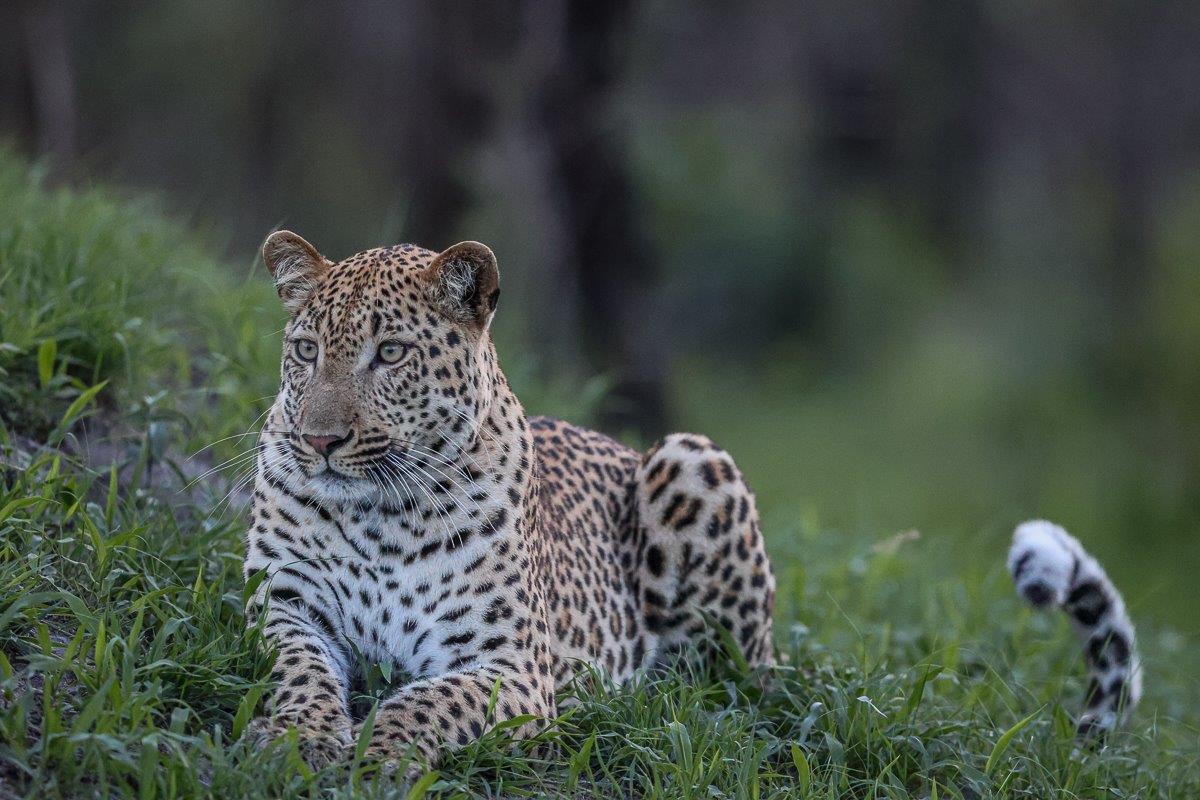
The young Kurhula female leopard was stealthily following a herd of impalas as they grazed across the field. She moved with great caution, ensuring she remained unnoticed by her prey. At one point, she found a small termite mound and cleverly used it as a vantage point to scan the herd for potential opportunities.
Leopards are renowned for their patience during hunts, often trailing their prey for extended periods while waiting for the perfect moment to strike. This calculated approach contributes to their remarkable success as predators.
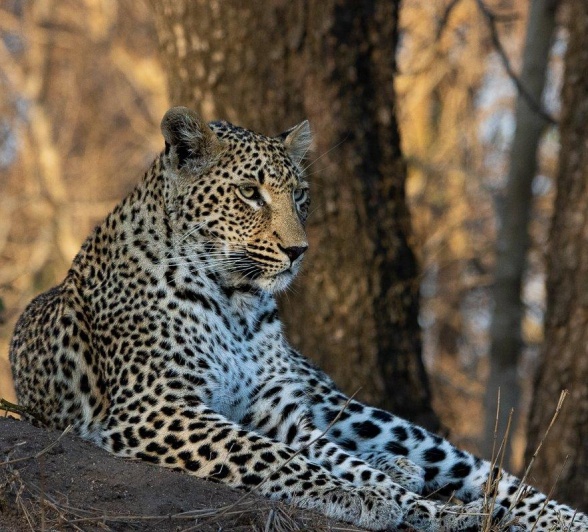
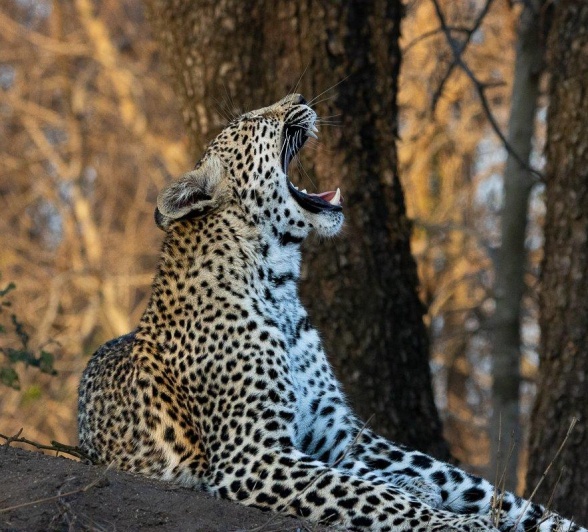
As we crossed through a dense drainage line, we were pleased to spot the Golonyi female. She was on the move, carrying a small warthog kill she had successfully hunted, searching for a safe spot to stash it. Over the past few weeks, Golonyi has been frequently relocating her cub, ensuring its safety. This time, her priority will be securing the kill in a protected location, allowing her to reunite with her cub and eventually bring it back to feed.
This meal is a hard-earned reward and will sustain them for a while as the cub mainly gets its nutrients from its mother’s milk at this age.
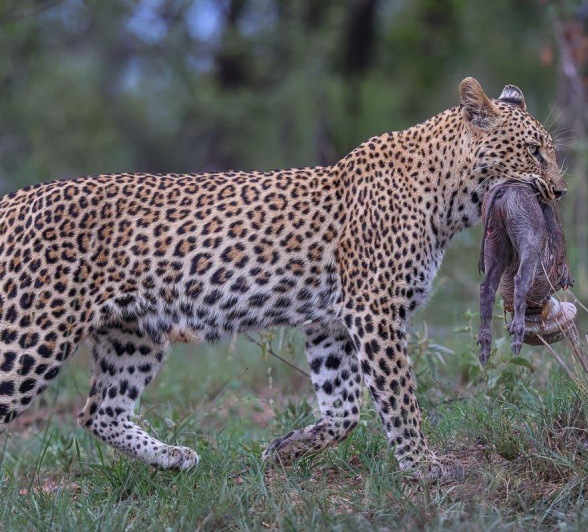
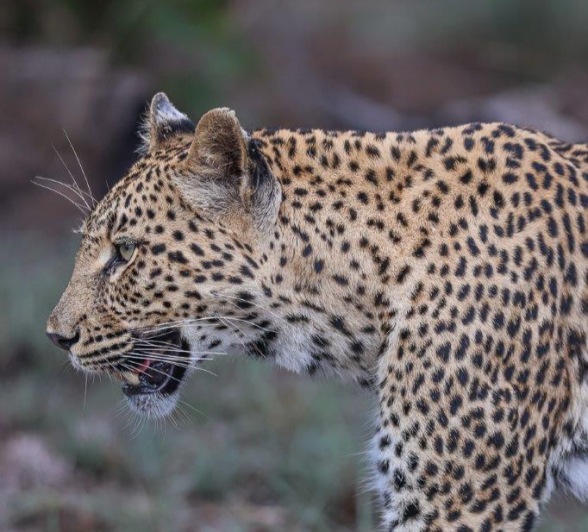
While driving through the eastern parts of our reserve, we were amazed to find the young Nottins male making his way from the open plains into a shaded, lower-lying area to escape the rising temperatures of the early morning. Panting heavily, he appeared to have recently finished a meal, his rapid breathing helping to regulate his body temperature. This impressive male is likely to spend the day resting in the dense thicket, with a nearby water source providing the perfect setting to digest his well-earned meal.
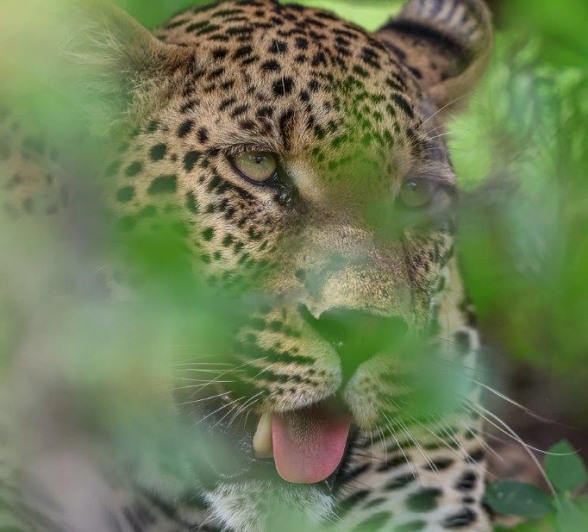
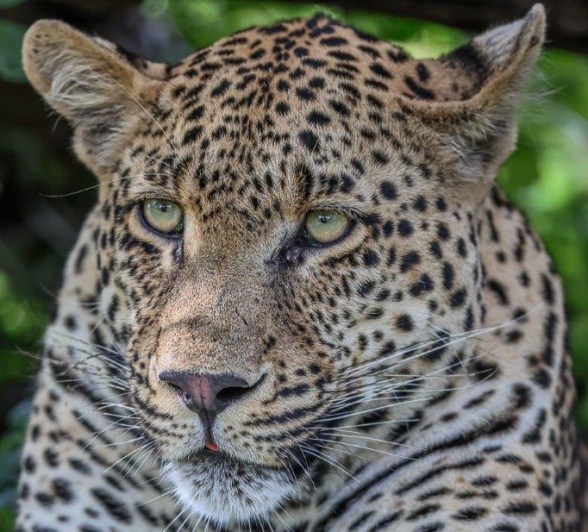
After a period of not seeing the Styx male and the young lioness accompanying him, we were fortunate to locate them in the northern section of our reserve. The pair had spent the entire day resting, only becoming active late in the afternoon as the sun began to set. Their behaviour suggested they were on the hunt, pausing frequently to scan their surroundings and pick up scents. Recently, this young male has faced significant challenges from dominant males in the area, having spent too much time within their territories. As a result, he seems to be seeking a quieter area where he can lie low, focus on building his body size and confidence, and bide his time until he’s ready to establish a territory of his own.
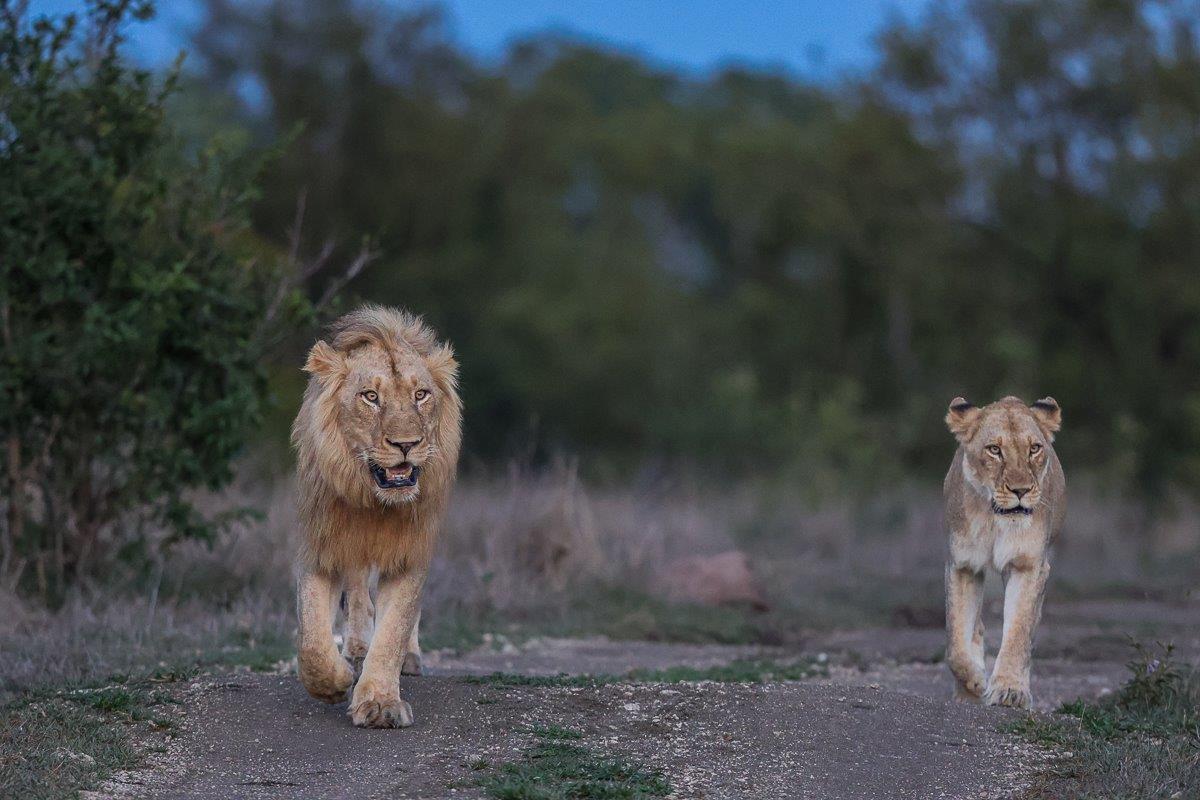
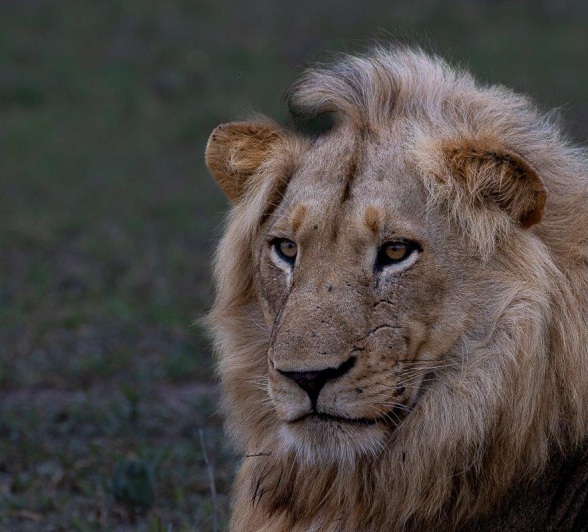
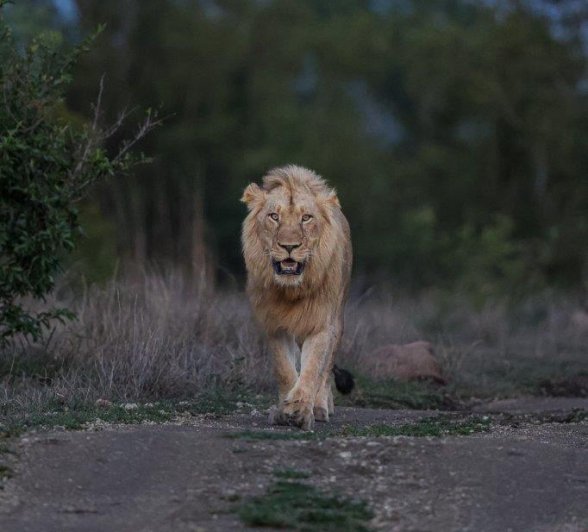
On Boxing Day, we found the Gijima males resting peacefully, spending the day in slumber. As the sun dipped lower and the light began to fade, we stayed with them, waiting for their slow stirrings into activity. One of the males took a moment to survey his surroundings, keenly assessing what the night might hold, before settling back into rest. Both males appeared to be in excellent condition, and it’s likely they’ll reunite with some of their female prides in the area, ensuring all remains well within their territory.
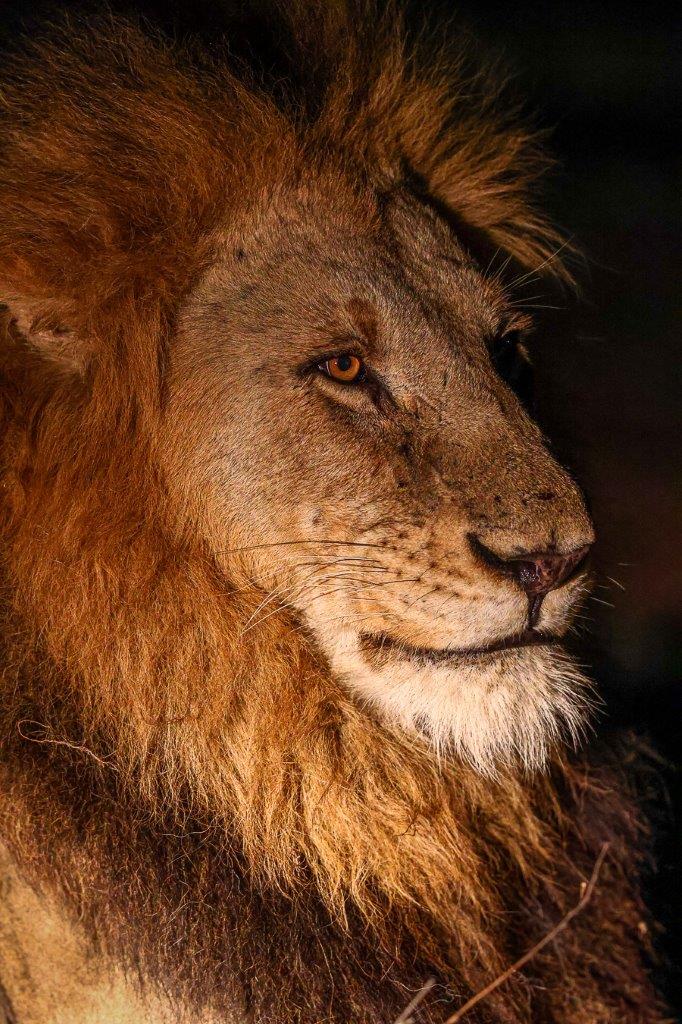
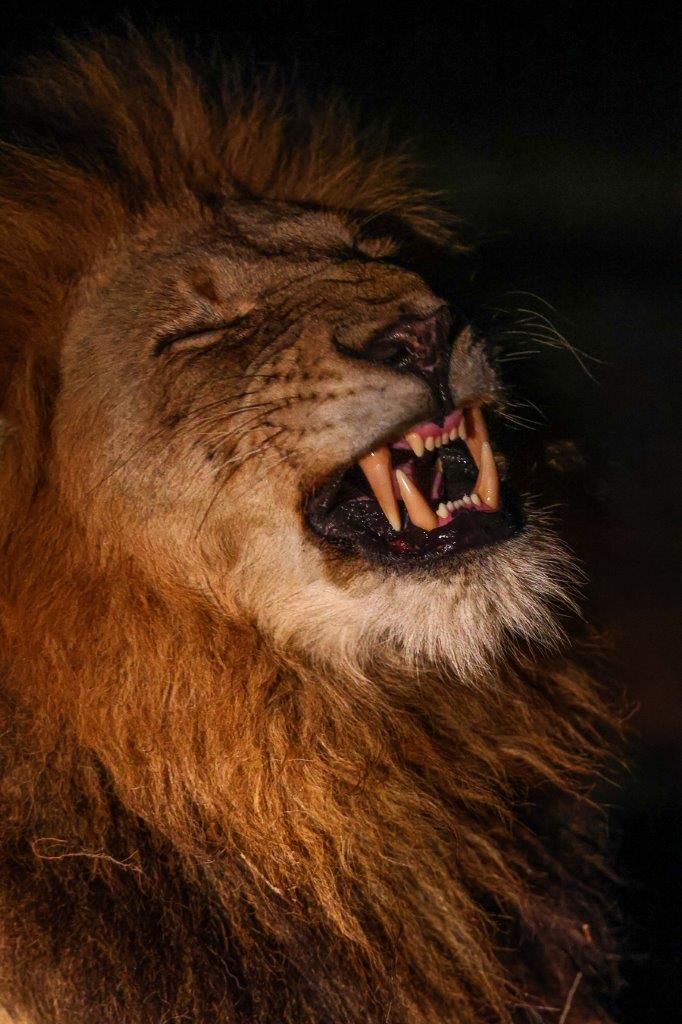
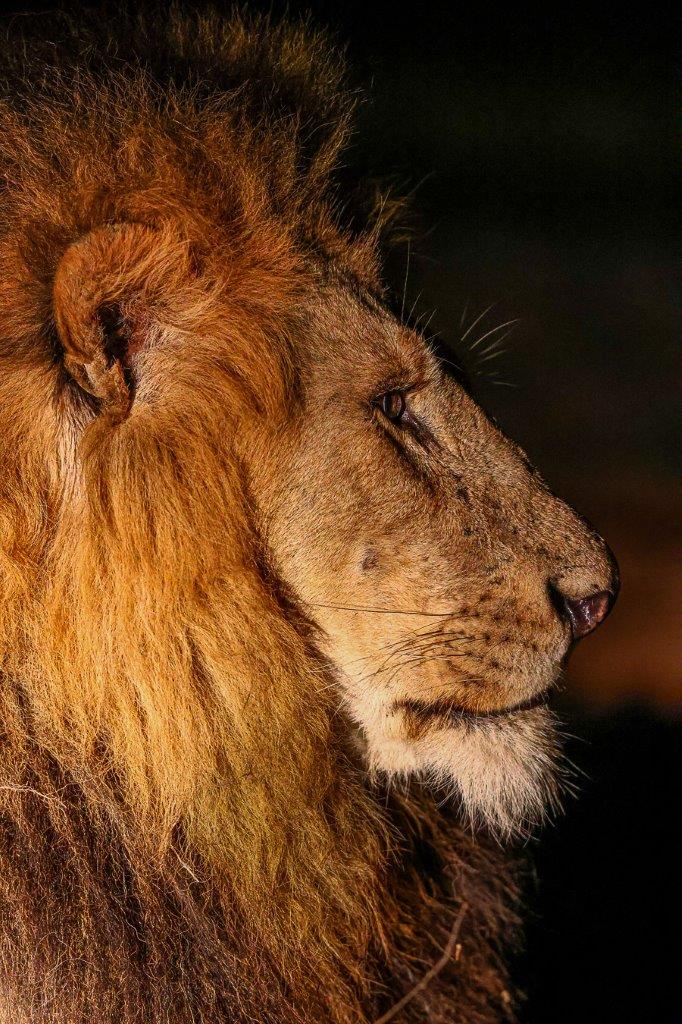
Into the New Year, we spotted one of the Gijima males near Bush Lodge, resting in the shade during the early morning. This impressive male is likely to remain in the cool, sheltered area throughout the day, conserving energy before resuming his movements after nightfall. With the Msuthlu Pride and the other Gijima male not far away, he is expected to reunite with his coalition partner under the cover of darkness, restoring their full strength as they navigate their territory together.
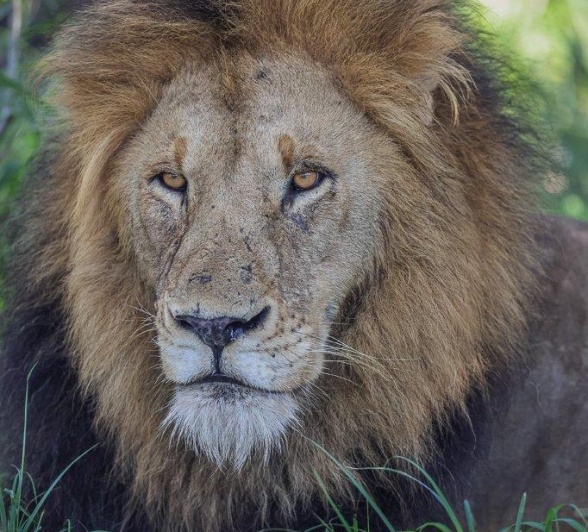
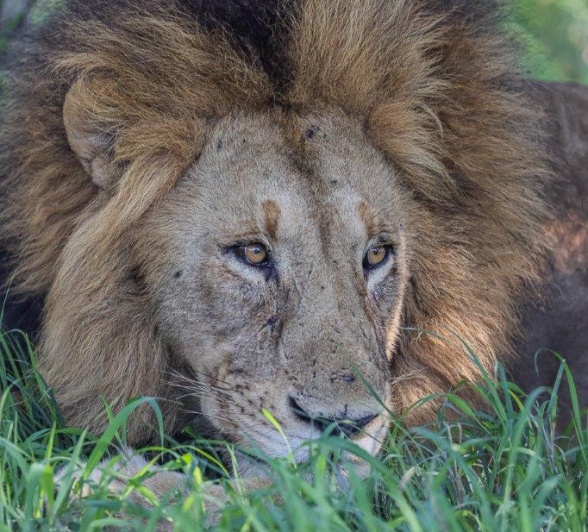
The Msuthlu Pride have been on the move for several days, following herds of buffalo. We were delighted to see them at the waterhole in front of Bush Lodge. Every member of the pride was present, except for the younger cubs, who had been left behind. All the lions had full stomachs, a clear sign that they had recently enjoyed a meal.
It’s common for the lionesses to leave their young cubs in safe locations while they hunt. If the pride secures a smaller kill, they often don’t return to fetch the cubs, as the little ones can rely on their mother’s milk, which provides sufficient nutrition for their age.
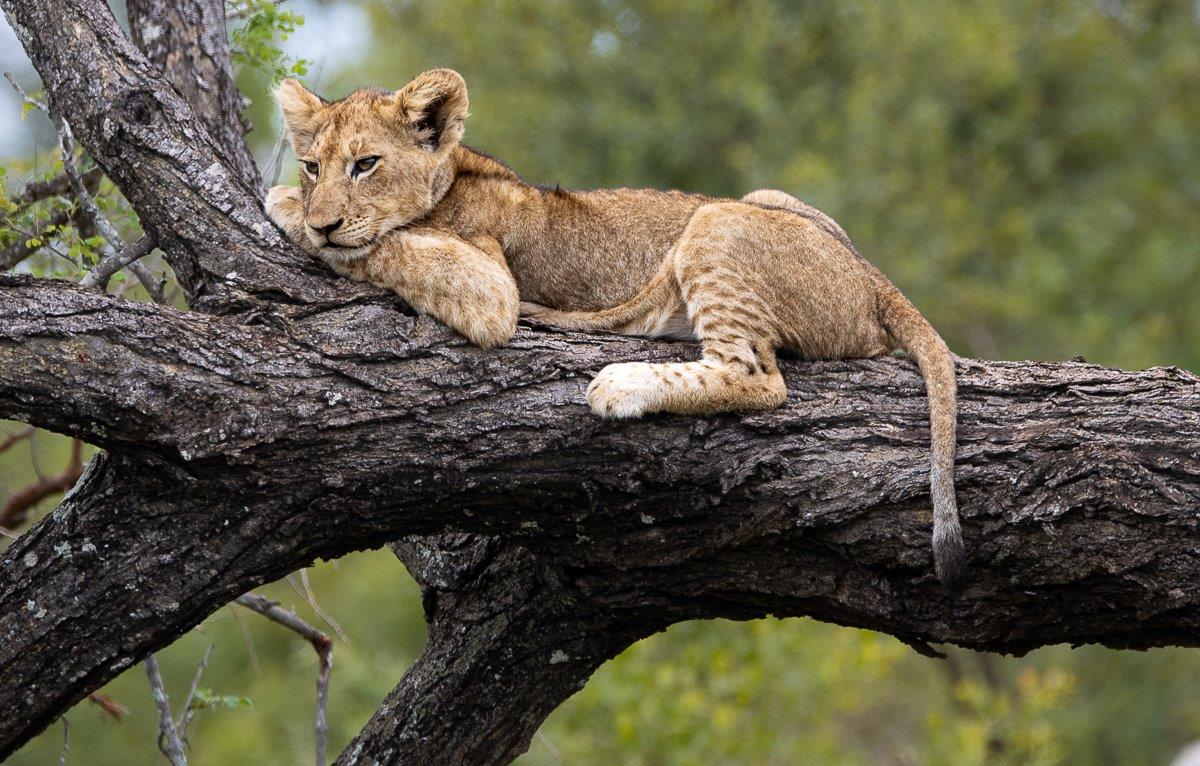
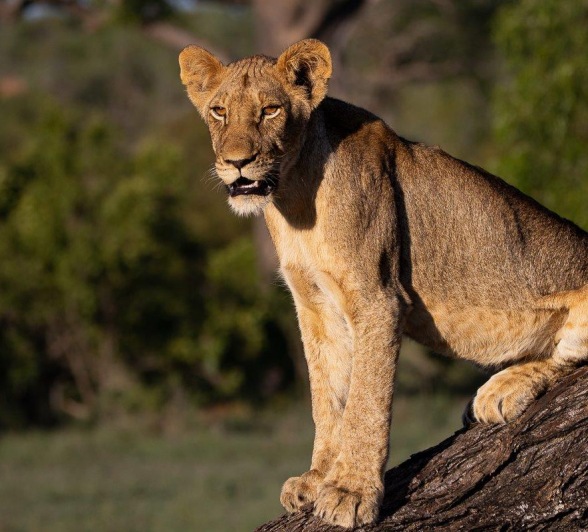
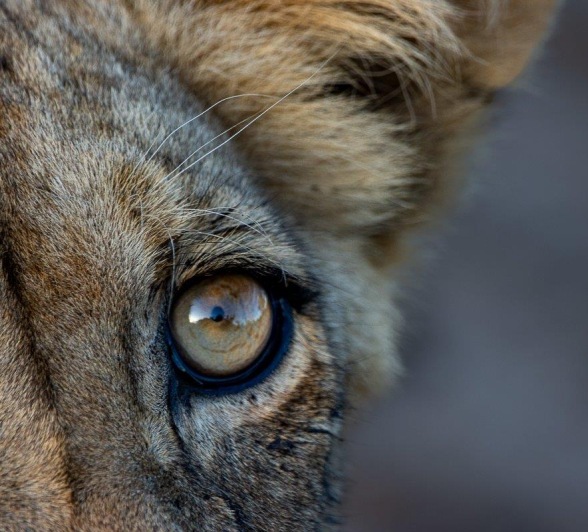
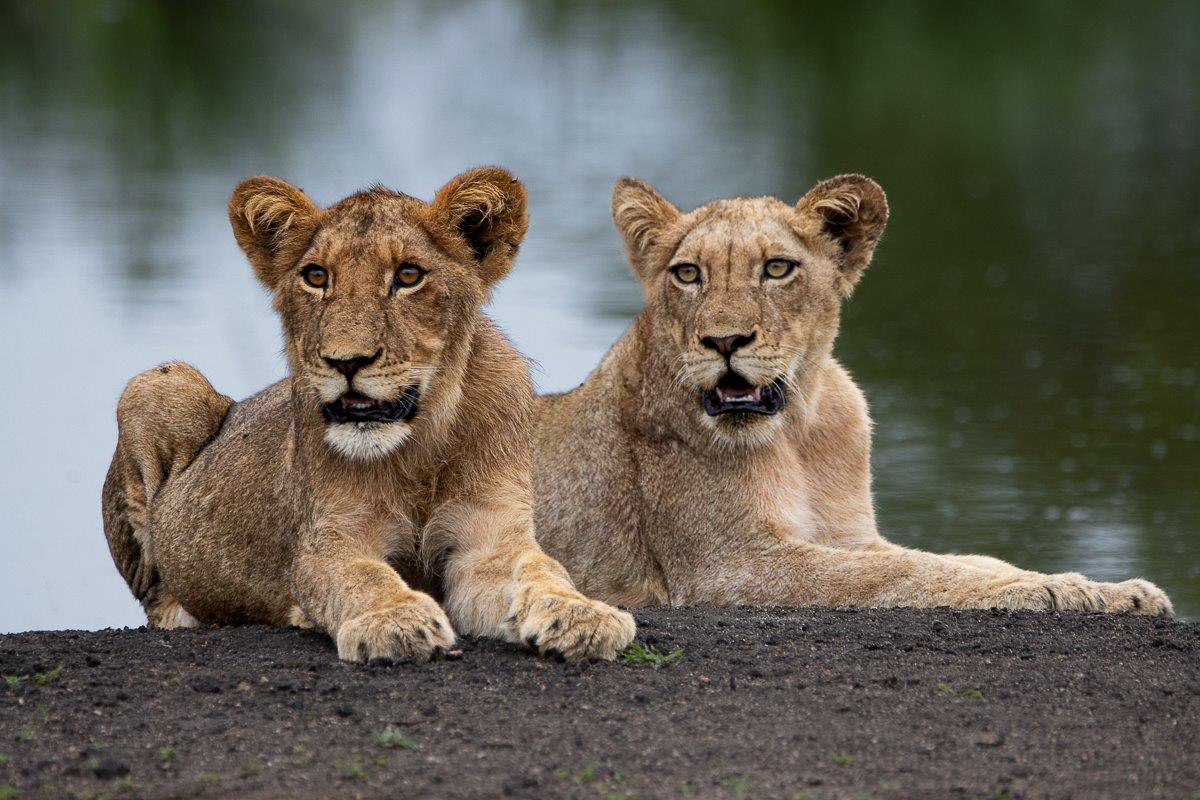

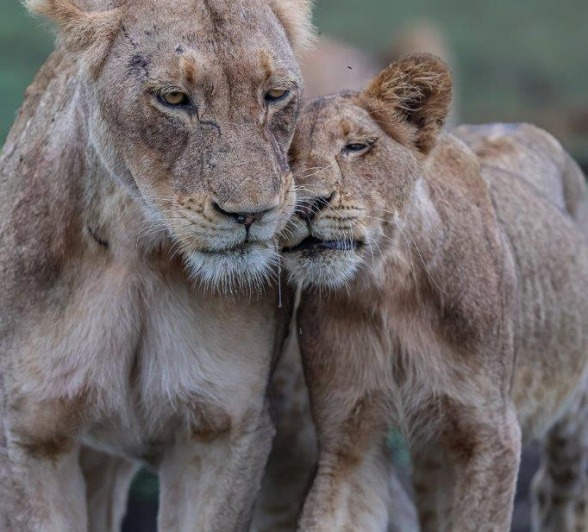
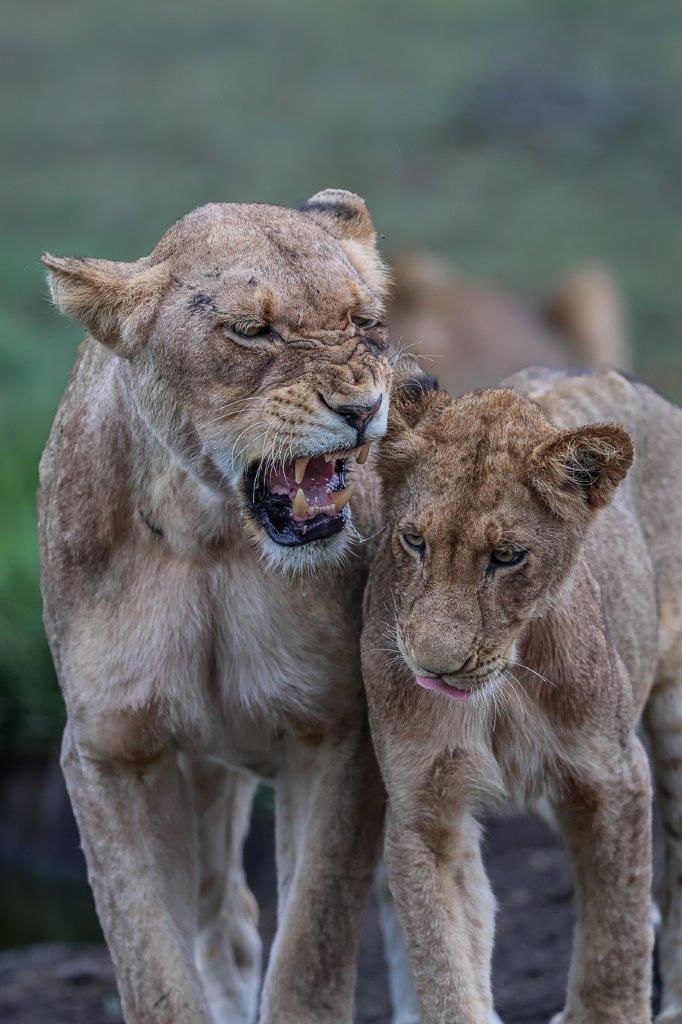
As we departed Earth Lodge for the morning safari, we almost immediately came across tracks belonging to a pride of lions. While attempting to circle around to determine where the tracks might lead, we discovered a second set of lion tracks. We knew these tracks didn’t belong to the same pride as the first, as the second group included a large male lion.
The tracking team decided to split up and follow both sets of tracks. It wasn’t long before we located the Msuthlu Pride along with one of the Gijima males, lying out in the open and sleeping peacefully. Shortly after, the second pride - the Southern Pride - was also located. Interestingly, these two prides were not far from one another.
The Msuthlu Pride’s presence this far west is unusual and risky, especially with their sub-adults accompanying them. Fortunately, the Gijima male is with them to provide support if necessary. Meanwhile, the Southern Pride remains deep in the heart of their territory, which should help keep them safe for now, as long as they steer clear of the Msuthlu Pride.
It’s intriguing to wonder why the Msuthlu Pride is venturing into the Southern Pride’s territory. Could they be seeking to expand their territory?
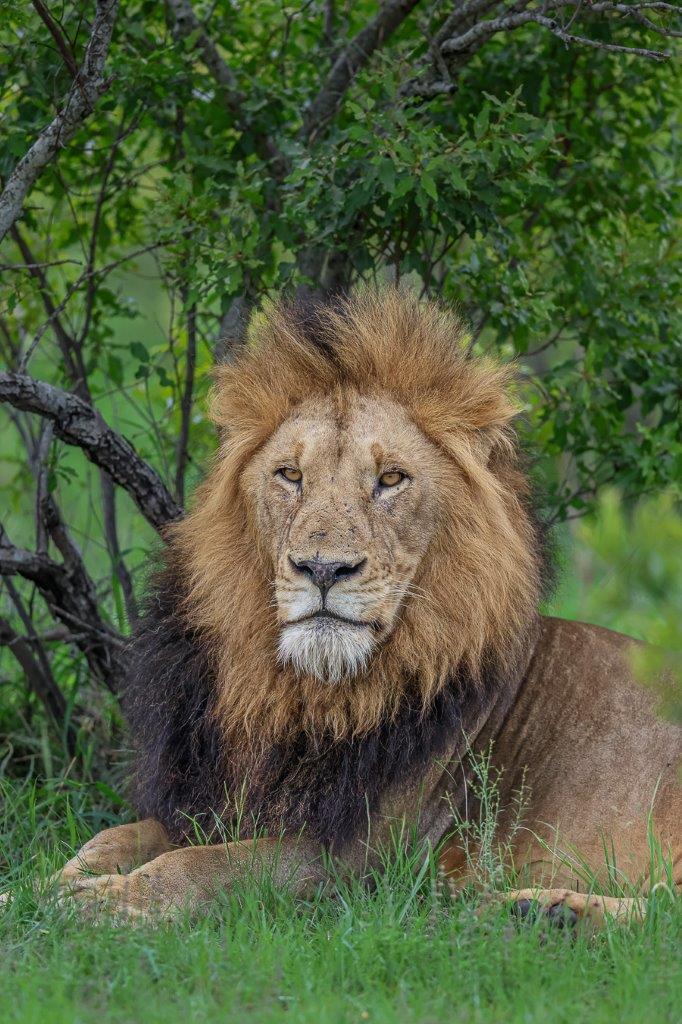

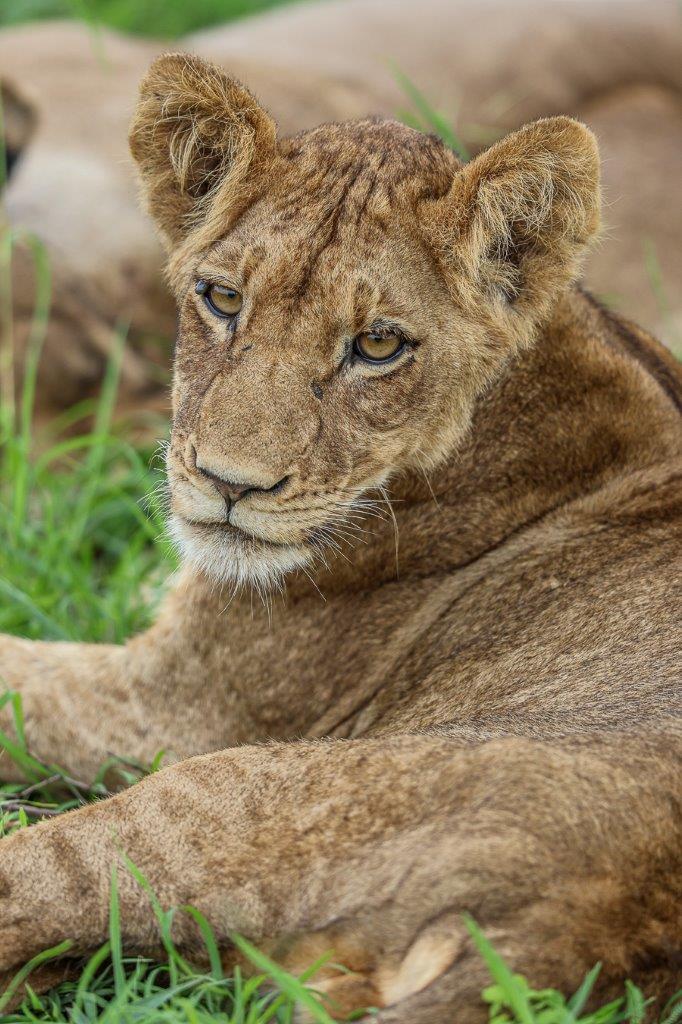
Heading towards the Sabie River for a late afternoon drink turned into an unexpected adventure, proving once again that the bush is full of surprises. As we navigated through a dense thicket, the unmistakable tawny colour of lions caught our attention through the trees. Upon closer approach, we discovered the Southern Pride indulging in the remains of a warthog they had successfully hunted.
The entire pride was lying in the shade, panting heavily after their meal, while one young lioness busied herself with the last of the warthog’s head. Their choice of location was ideal - sheltered by a tree canopy that offered respite from the heat and positioned near water, ensuring they could stay hydrated. Content and conserving energy, the lions appeared in no hurry to move. They would likely rest and digest their meal before moving, aware that the scent of the kill could soon attract scavengers like hyenas.
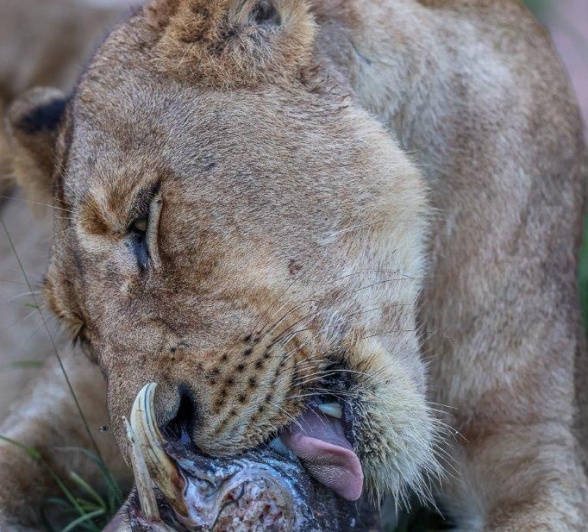

After a day of tracking the elusive Southern Pride without success, we were finally rewarded the next day when we found them resting in a small open clearing. All members were panting heavily, a clear sign that they had recently finished off a kill hidden somewhere in the nearby thickets and began to move away from the area. With the sub-adults in tow, the pride likely chose to move to ensure their safety, fully aware that hyenas and other scavengers would soon converge on the site under the cover of night.
The following day, we found half the pride on a young zebra they had successfully brought down. As we observed a few individuals finishing off the remains, we speculated about the whereabouts of the rest of the pride, expecting them to be nearby.
When the younger members began to move off, we decided to follow, knowing they would likely lead us back to the others. To our surprise, they led us to a second kill, a kudu, not far from the zebra site. This marked an exceptionally successful evening of hunting for the Southern Pride, as they had managed to secure two kills, ensuring an ample food supply for the entire group.
For the rest of the day, the pride will remain in the area, resting and digesting their meals in the heat. As night falls, they’ll likely set out again, heading toward the nearest water source, which is abundant at this time of year, thanks to the rains we’ve been receiving.
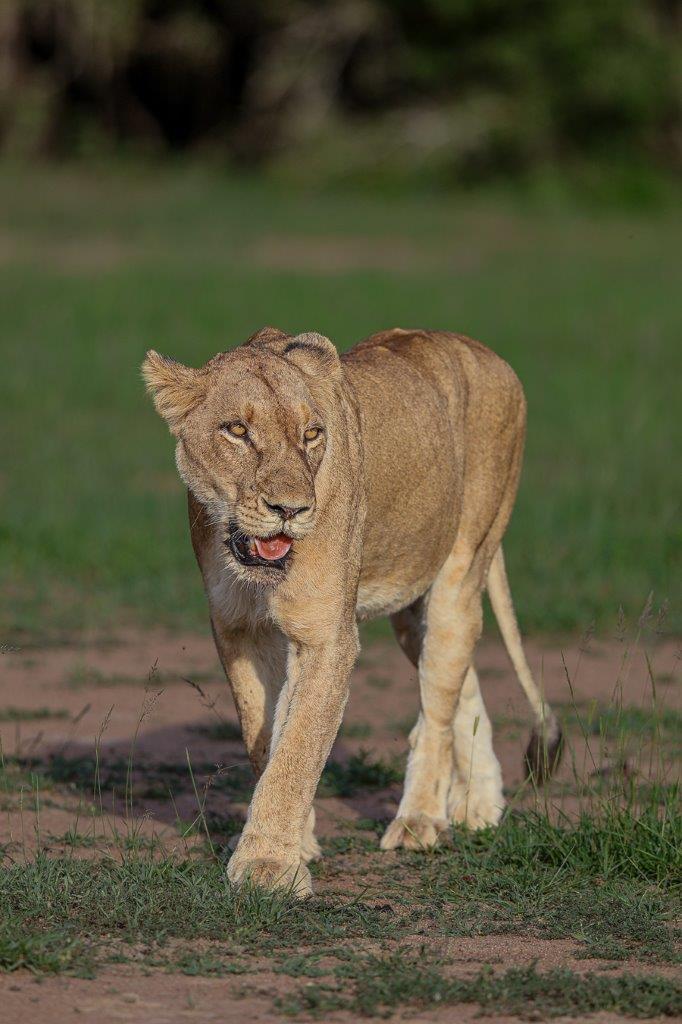

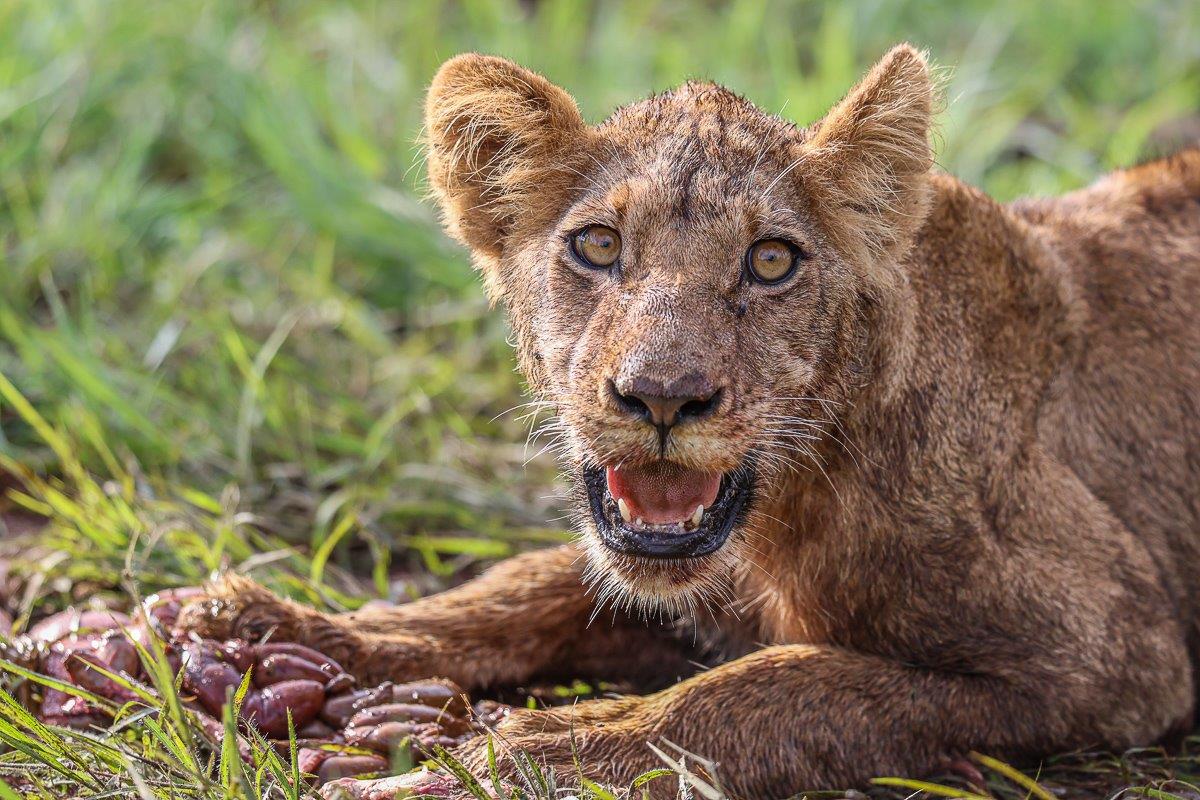
Until next time…

Blog by Wendy Claase
Images by Benjamin Loon, Ronald Mutero and Ruan Mey







